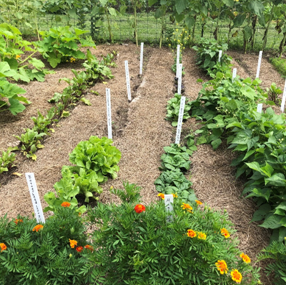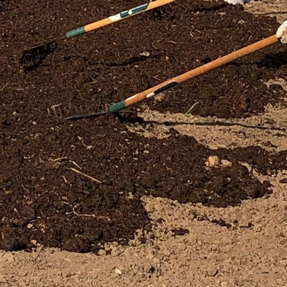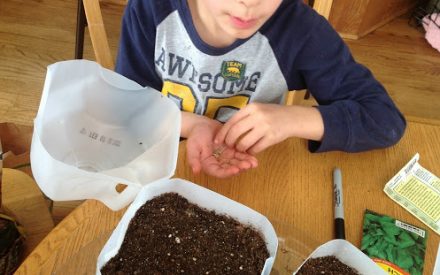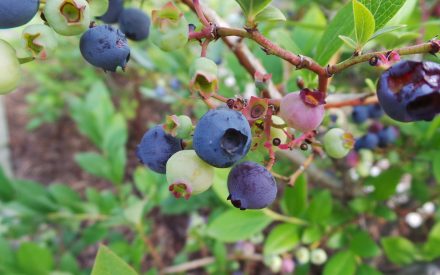Authors: Diana Alfuth, UW-Madison Extension
Last Revised: 04/08/2021
X-number: XHT1279
Starting a vegetable garden may seem overwhelming to a first-time gardener. However, learning gardening basics and being successful in gardening endeavors can be quite easy. This fact sheet focuses on how novice gardeners can select and prepare their garden site to ensure maximum success.

Where should I plant my garden? Most vegetables require full sun (i.e., at least six hours of direct sunlight) each day. Watch a potential garden site throughout the growing season to make sure that trees or buildings do not shade the area from late morning through the afternoon. A garden area should be well drained; water should not puddle or significantly flow through the area during heavy rains. Avoid low spots where frost might settle in late spring or early fall, and steep slopes where runoff or erosion could occur. Be sure the area has a convenient water source (e.g., access to a hose) so that you can water during dry spells. DO NOT locate a garden within the root zone of black walnut trees. These trees produce chemicals (juglones) that interfere with the growth of many vegetables. See University of Wisconsin Garden Facts Black Walnut Toxicity, for details. Keep in mind that the roots of a tree can grow three to five times the height of a tree away from the trunk. Finally, make sure there are no underground utility lines where you plan to garden.
How big should my garden be? Plan the size of your garden based on what you want to grow. Crops like beans, beets, herbs, lettuce, onions, potatoes, radishes, squash and tomatoes are good options for first-time gardeners. Start small with just a few crops that are easy to grow and care for. Research (e.g., online, in seed catalogs, etc.) how large your selected vegetables will grow, and plan enough garden space so that they are not crowded. Proper spacing promotes good air circulation and sunlight exposure. Crowded plants will be less productive, difficult to maintain, and more susceptible to diseases. Consider using bush varieties of vining crops like squash as these take much less space than vining varieties. Tomato plants should not touch each other when fully mature and should be trellised to prevent crowding. Cucumbers and smaller-fruited squash can also be trellised to improve spacing. Space vegetables like beans, carrots and radishes that are seeded in rows according to the instructions on their seed packets.
When planning your garden, consider drawing a map to scale using graph paper to be sure you have enough space for your plants. See Extension bulletin The Vegetable Garden to learn more on garden mapping, as well as about space requirements for many common vegetables.

How do I prepare my garden soil? Ideally, start preparing your garden site the year before planting. Remove any existing vegetation from your garden site (particularly grass). You do not want this to grow back in your garden later. A sod cutter (available to rent in most locations) can be useful for removing grass. Alternatively, if the garden area is small enough, you can remove grass by hand using a shovel. Be sure to collect any excess soil from the dug sod and return it to your garden. After removing whatever vegetation you can, cover the area with cardboard, a tarp or black plastic to smother out any remaining vegetation that you have not been able to remove.
Once your garden area has been cleared of vegetation, add compost to improve the overall soil structure. Compost helps sandy soils hold more moisture and nutrients, and it makes clay soils lighter and better drained. Compost also adds trace nutrients needed by plants. Work a two to three inch layer of compost into the soil with a rototiller or shovel at least a month prior to planting. Smooth the surface so that you are ready to plant when the weather is appropriate.
Also, consider having the soil in your garden nutrient tested through a certified lab before planting. A soil test will provide information on the type of soil, the soil pH, the amount of organic matter, and the levels of phosphorous and potassium. The optimal pH for a vegetable garden is around 6.5, although most vegetables will grow very well with a pH anywhere between 6.0 and 7.2. A good soil-testing lab will also give you specific recommendations of what to add to your soil to adjust the pH and improve nutrient levels to grow vegetables more successfully. If you do not have time to test the soil before planting, you can submit a sample later and still make amendments. However, amending soil after planting is more challenging.
Download Article





 Home Fruit Cultivars for Southern Wisconsin
Home Fruit Cultivars for Southern Wisconsin Seed Starting
Seed Starting Growing Vegetables at Home: Questions and Answers
Growing Vegetables at Home: Questions and Answers Growing Blueberries in Containers
Growing Blueberries in Containers


